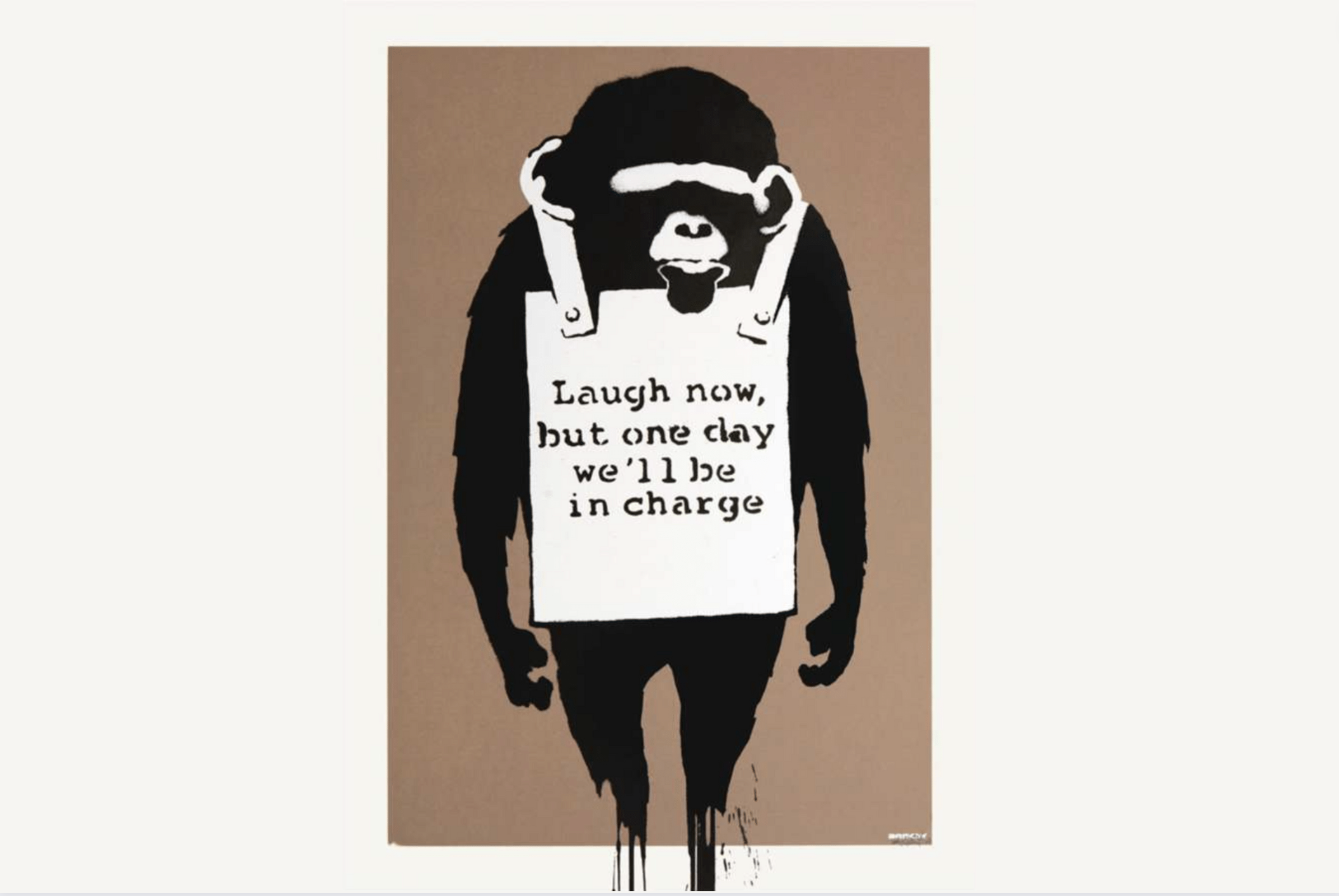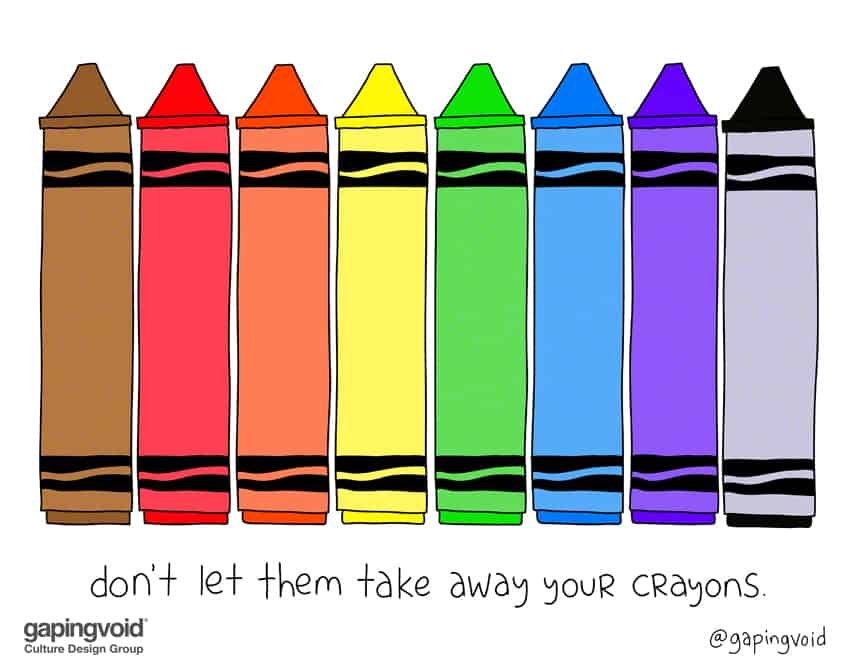Laugh Now, But is AI in Charge?
The attitude, culture and tools you need to oversee AI.
Laugh Now, by Banksy. Hexagon Gallery
Laugh now, but one day AI will be in charge.
Unless you act.
In Laugh Now, Banksy seems to ask: are spooky monkeys with melting legs making too many decisions? Has AI gone wild? Who's really in charge?
Take these steps to wrest control from the Banksy Monkey:
Accept that AI Oversight is a Human Issue, Not a Scientific One
AI bias comes from humans, not algorithms. As Cassie Kozykov from Google explains, "people make and choose algorithms, and people make and choose the data."
So the first step to effective AI oversight is to accept that we're in charge, not the monkey!
Install AI Decision Observers
In Noise, Nobel Prize-winning psychologist Daniel Kahneman says humans are terrible at detecting their own biases. His research indicates that the best way to spot bias is to have someone else identify it! He calls these people Decision Observers. Hire some.
Here's a job description for humanist data scientists you can steal.
Don't Tap Data Scientists to Oversee Data Science.
Decision Observers do NOT have to be data scientists. Instead, they should have humanist skills: behavioral economics, psychology, and business--they must understand why decisions matter, not how they're programmed.
Make AI Oversight a Team Sport
As with heads, two Decision Observers are better than one.
As your use of AI grows, form teams of Decision Observers and pair them with data engineers, domain experts, data scientists, and decision-makers.
Teamwork requires Google Doc-like ModelOps tools like the one shown above to make AI oversight a team sport.
Arm Decision Observers with AI/ML Model Operationalization Tools
Decision Observers need tools. AI/ML model operationalization tools, or ModelOps, help teams methodically select, evaluate, deploy and manage AI. They also capture data about how AI performs.
The dashboard below shows AI decisions for loan approvals and the reasoning behind each decision. For example, we see below that the estimated loan value is being used by this model more than the old one; is this economic bias? Decision Observers can judge that once they see it.
AI Analytics show Decision Observers how algorithms work in production to help manage performance, bias and risk.
Learn From and Prepare for the EU Artificial Intelligence Act
Finally, get ahead of the regulation game by learning about the EU Artificial Intelligence Act. The EU AI Act lays out compliance principles that Decision Observer teams should follow and anticipate.
Don't Let the Banksy Monkey Get the Last Laugh.
Combined, the right culture, tools, and constructive regulation help you form a more effective culture to manage AI and ensure Banksy Monkey doesn't get the last laugh.
For More Reading
10 Things You Need to Know About Model Ops. O'Reilly. Thomas Hill, Mark Palmer, Larry Derany.
The EU Artificial Intelligence Act
Bias in AI comes from people: *people* make+choose the algorithms and *people* make+choose the data. The thing to fix is the *people* in tech. Diversity is a must. If everyone on a team has identical perspectives, they're less likely to catch issues. Cassie Kozyrkov
AI Bias and What to Do About It (Hackernoon). By Cassie Kozyrkov
Follow TIBCO ModelOps on LinkedIn to learn more.














